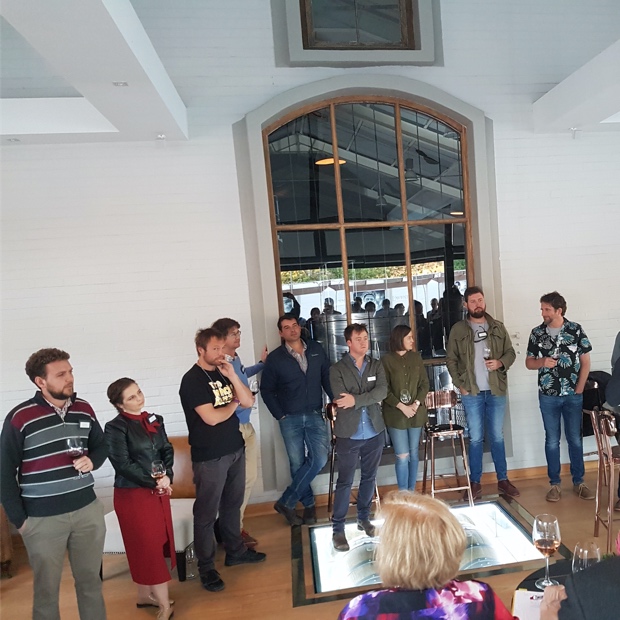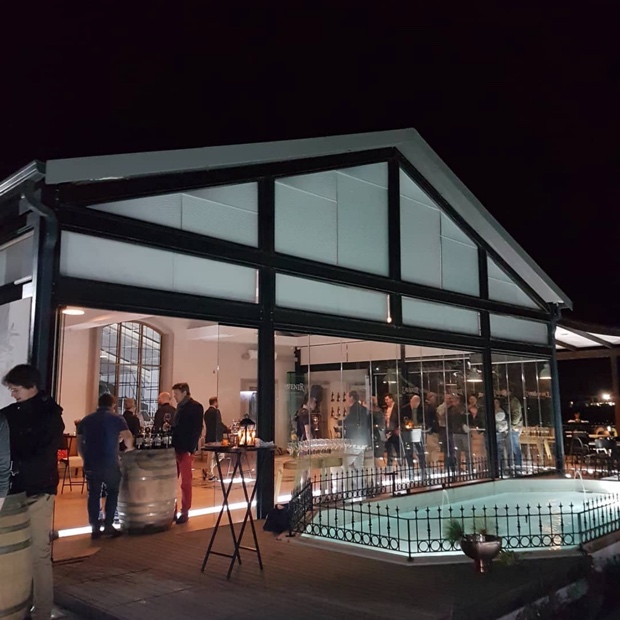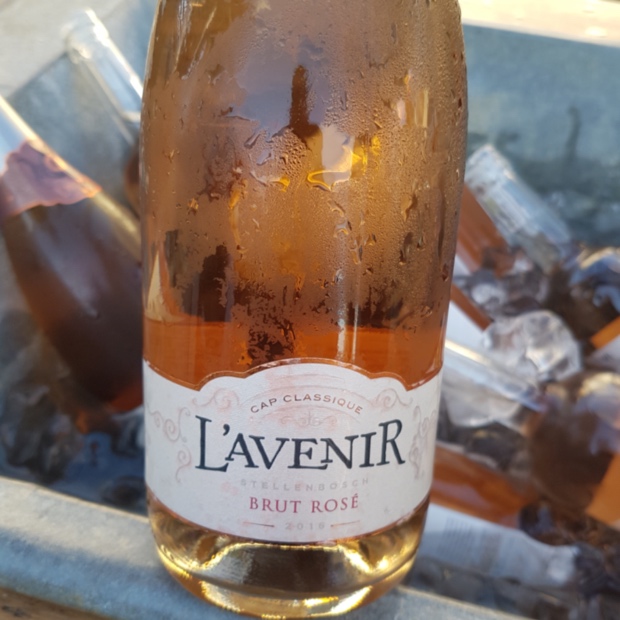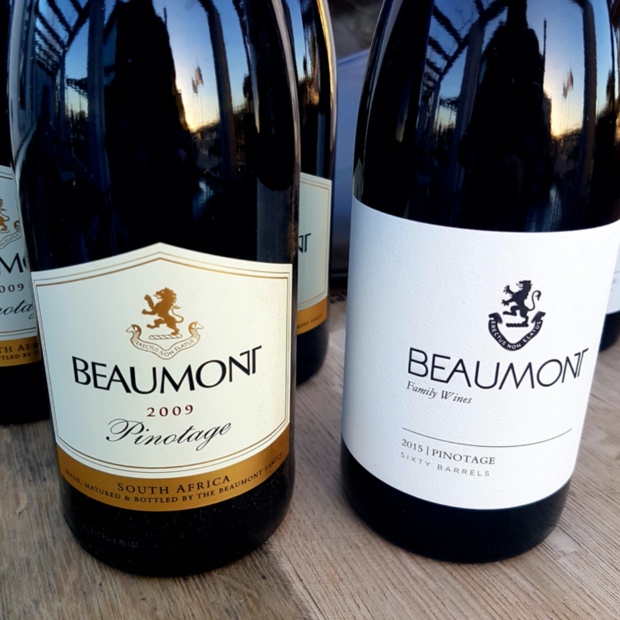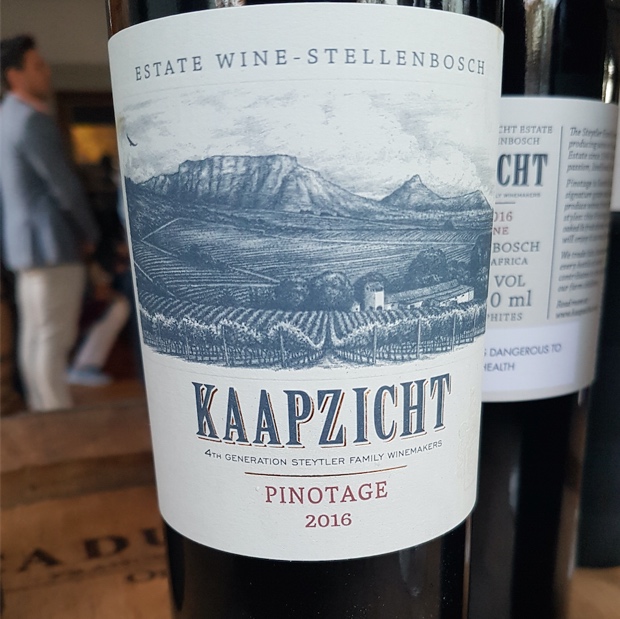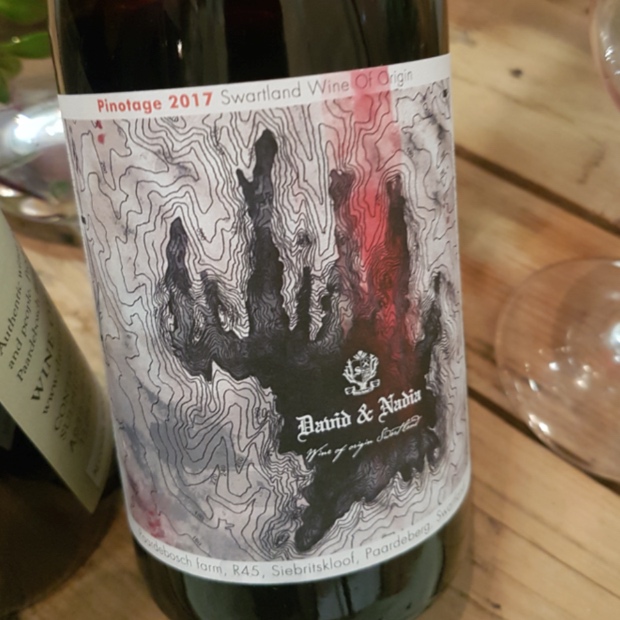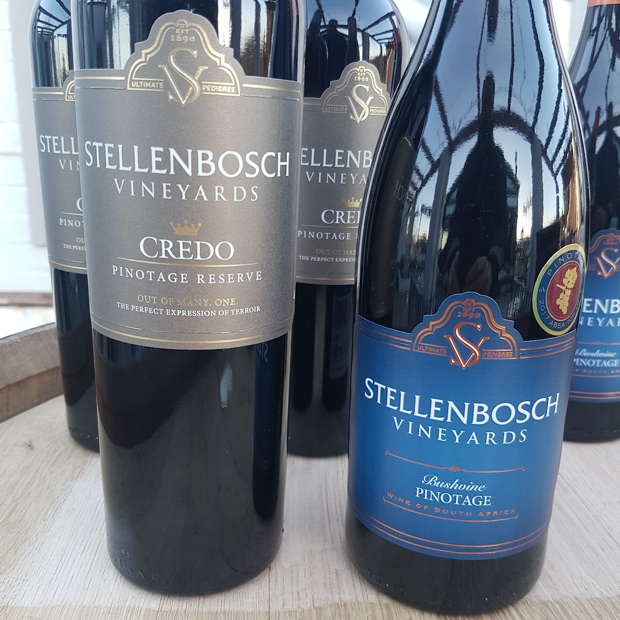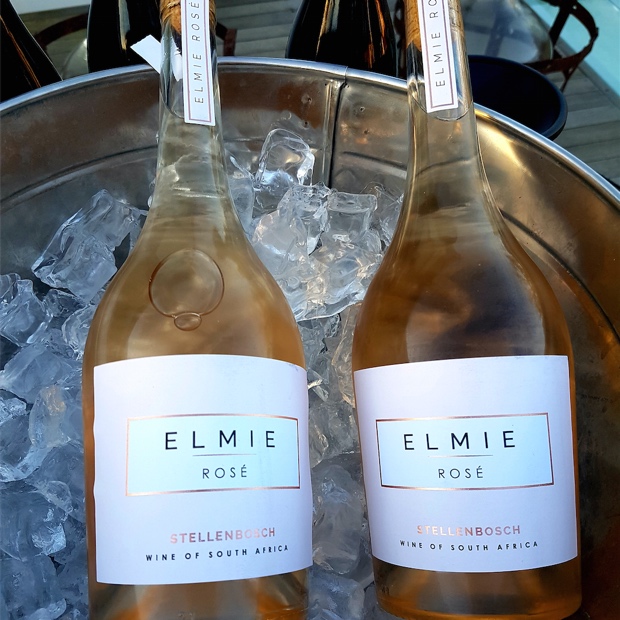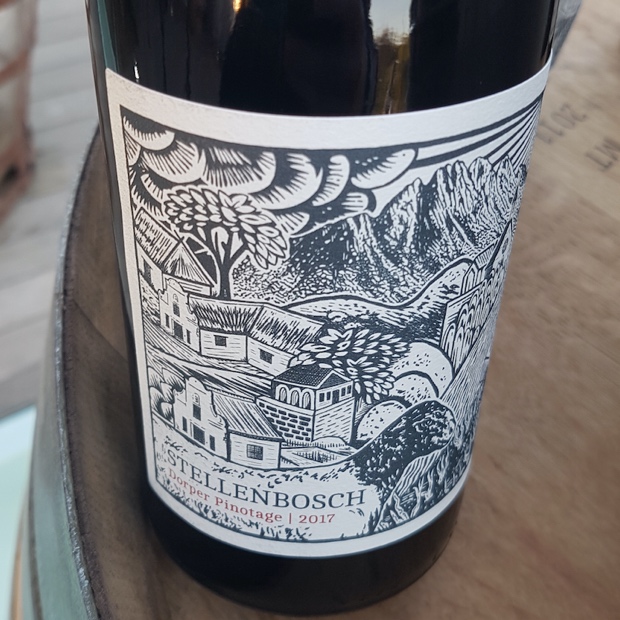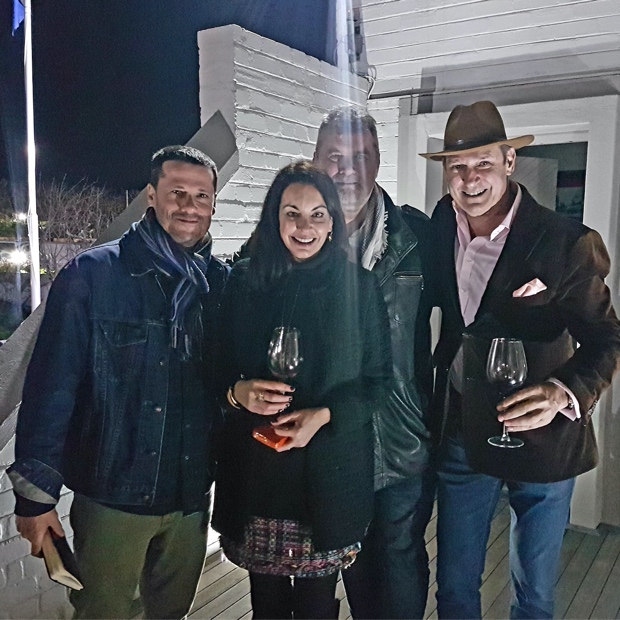An excerpt of this pinotage assessment appeared in my larger and more comprehensive South African profile, “Heritage and diversity in South Africa.”
Related – Searching for great heart in South Africa
What do we know about pinotage?
Here are some essential facts about the grape variety. The year was 1925 when Dr. Abraham Penold of Stellenbosch University exorcized a Shelleyan right to marry cinsault with pinot noir in a successful attempt at creating a new varietal for the ages. Pinotage was born at the hands of a grafter with exceptional foresight. We’re not so far away from the 100th birthday and if you ask any one of the producers profiled here I’d wager most would agree. Pinotage is South Africa’s heritage meets signature red grape.
We don’t get fooled again
Don’t get fooled again, no no
To be clear there is a great chasm and worlds apart difference between most important and most famous. Research be denied or not, the distinction we are trying to establish concerns the latter, at least for the time being. Pinotage is indeed famous for being bad, insidious and effluent. It’s much maligned reputation and status is a concern borne from bad farming practices, misappropriated oak make-up and hands-on winemaking gone out of control. The mistakes are no longer rampant and there is a new game being played in Western Cape towns, in many ways same as the old ones established well before a generation of fools and horses took over the scene. Today and going forward the next generation of Pinotage young guns (and some older ones) are simply saying “meet the new boss, same as the old boss.”
Pino Pistols – The next generation of Pinotage young guns
Heritage in South Africa is not just reserved for chenin blanc. “You know what old vines can give you,” says L’Avenir’s winemaker Dirk Coetzee. “We’re here to discuss a pinotage revolution. We’re here to discuss the next generation of pinotage.” Stellenbosch is host to the greatest concentration of Western Cape plantings and over the last ten years it has grown by 52 per cent. “Once we start making authentic product people will start thinking and the product will speak for itself.” In fact it has moved from being the sixth to the third most planted grape varieties. Beyerskloof winemaker Ani Truter adds, “what I tasted in the 80s was not pinotage, it was sabotage. It took 2,000 years for Burgundy to be successful. Don’t worry, it won’t take that long in South Africa.” Only a Châteauneuf-du-Pâpe winemaker could pay a compliment with such direct proposition.
David Sadie continued the analysis with his take on soil and cellar as being the reasons for making good and bad pinotage. “If you look at a bad pinotage today you can look at the cellar and not at the cultivar.” This in explanation for how pinotage has improved and is moving on from rubbery, toasted and burnt flavour profiles. “It’s about site selection, planting in the right areas.” It’s also about pH levels. “Your attention to hygiene is really important, it’s pH driven.” And finally, Jacques de Klerk of Radford Dale.” They used to be made at high alcohol levels and the margin for error was very precarious. It comes down to over extraction and over use of oak.” The times they are a-changin’.
I tasted 23 examples of pinotage this past September and was impressed by the right, proper and forward thinking presence of them all. The future is already cemented in quality but more than that, in a culture that feels this direction of clarity and transparency is the right one to follow. The followers are coming, now quicker than ever, to get a glimpse and a taste of these dry-farmed, terroir-driven pinotage.
L’Avenir Glen Rosé 2017, WO Stellenbosch, South Africa (Winery, WineAlign)
This dry Rosé is made from pinotage and it carries an amber, skin-contact styled notable tannin and orange skin scrape. Also enough fruit to call it a julep on the aromatic front. Not a major proboscis mind you but one that is classically herbal, never pointed and sweetness is just a faint idea. It’s a bit dangerous in how there is great ease in the knock it back department. Drink 2018-2019. Tasted September 2018 lavenir_wine_estate selectwinemoments @LAvenirWines @SelectWinesTO @LAvenirEstate @SelectWinesCanada
L’Avenir Pinotage 2016, WO Stellenbosch, South Africa (Agent, $14.95, WineAlign)
When it comes to pinotage there are few producers capable of delivering the triumvirate of quality, honesty and ignoring of sickly trends. There is no mocha in L’Avenir’s take on the mistaken identity grape. In this case it’s like you’d expect pinotage to be but also completely unexpected because it takes classic relief, alters the perspective and turns the architectural rendering on its head. Pinotage needs to keep you on your toes, confuse with trompe l’oeuil drawn trickery and offer up great surprise. That’s what makes it special. Here richness is met head on by tannin, dusty fruit by bold acidity and spice mix at the gate of intensity. Just imagine the possibilities in the estate’s single block. Drink 2019-2022. Tasted September 2018
L’Avenir Pinotage Single Block 2016, WO Stellenbosch, South Africa (Agent, WineAlign)
Taken from dry-farmed vineyards and put to fourth/fifth passage barrels. Only 4,000L make up this single focused lot out of which both the depth and volume have been turned up. Extract talks in fruit density tannic decibel counts but even higher by acidity so all falls into place. Or will. Eventually. Drink 2019-2022. Tasted September 2018
Beaumont Family Wines Pinotage 2009, WO Bot Rivier, South Africa (Agent, WineAlign)
The vines would have been just past their 30th birthday and Sebastian remembers the vintage with fond memory, as he would considering he chose to pour this nine years later at a large pinotage tasting. Wood as it was and still is now wholly integrated though both acidity and length are still thriving so structure is the constant and the given. The tang afforded the fruit is spot on with legs stretching, the whole outfit breathing and now with a salty note to ties it all together. Much time remains for pure pinotage pleasure. Drink 2018-2024. Tasted September 2018 beaumontwines @Beauwine @Smallwinemakers @beaumontfamilywine @smallwinemakerscollection
Beaumont Family Wines Pinotage Sixty Barrels 2015, WO Bot Rivier, South Africa (Agent, WineAlign)
So interesting to taste this seminal pinotage by Sebastian Beaumont side by each with his 2009 “normale.” The same 1970s planted vineyard is employed, here from two blocks, one 44 years of age and the other being a spritely 21. The salty note on the aromatic top is faint, hidden beneath massive fruit ability, but it depends (of course it depends), on vintage. This one is full of wealthy possibilities and stealth opportunity, especially when the salt rises to the surface in thew clay. That clay effect is a fulsome one, really notable from 2015 to claim fruit, stash it away in reserve and wait for structure to build, crest and relent. Many years will pass as a result of this pinotage process. This is how you build varietal wealth and worth. One of South Africa’s finest. Drink 2019-2027. Tasted September 2018
Kaapzicht Pinotage 2016, WO Stellenbosch, South Africa (Agent, WineAlign)
Winemaker Danie Steytler says “we think pinotage is like grenache, or cinsault” and he would be correct in that if you allow it to speaks its own very specific language it will be readily identifiable. And enjoyable. As here, with perhaps the highest level of glycerin content found anywhere in Stellenbosch. Intensely viscous, not as syrup but certainly living the silky dream. From a warm vintage the alcohol is noted and the youth as well, from 19 year-old bush vines planted in weathered granite soil. It may be counter intuitive but the wood is also stronger than the Steytler, having seen 33 per cent new French oak barrels for 18 months. The vintage is even stronger and so the combination makes for a pretty powerful wine. Drink 2018-2021. Tasted September 2018 kaapzichtwines @KaapzichtWines Kaapzicht Wine Estate
Kaapzicht Pinotage Steytler 2015, WO Stellenbosch, South Africa (Agent, WineAlign)
This is a pure pinotage, a generational wine that carries the family name and the current varietal centrepiece for winemaker Danie Steytler. Low yielding vines are planted in weathered granite topsoil on a layer of gravel, above a crumbly clay sub-soil. The terroir plus a warm fermentation make for pinotage of high glycerin, ethereal texture, generous alcohol ann general warmth in abound all around. Plenty of fresh red fruit and a dry constitution in a structured pinotage pays great homage to George Steytler who farmed Kaapzicht for 33 years. Drink 2019-2022. Tasted September 2018
Beyerskloof Pinotage Reserve 2016, WO Stellenbosch, South Africa (Winery, WineAlign)
Tasted with winemaker Anri Truter, the Reserve is aged in 20 per cent new barrels with the remainder second through fourth passage wood. Quite rich and full in terms of pinotage fruit without any mocha make-up though there is quite a level of smoulder. Both the acidity and the tannin are set quite high so overall this presents a structured gambit worthy of the designation. Long and lasting seals the deal. Drink 2018-2021. Tasted September 2018 beyerskloof churchillcellars @Beyerskloof_ @imbibersreport @Beyerskloof @imbibersreport
Beyerskloof Pinotage Diesel 2015, WO Stellenbosch, South Africa (Winery, WineAlign)
The bush vines are in the 20 year range on gravelly Oakleaf and Klapmuts soil for this highly credible example of what is possible with pinotage, especially in Stellenbosch. This is nothing but a structured red, housed in 100 per cent new French oak barrels for 20 months. After maturation, only 20 barrels were selected out of a possible 300. The fruit is richer, the texture denser and the extraction at the top end of the ideal. There is more of everything here, including savour and it’s anything but reductive or ball bouncy. Big, roasting, boasting and blasting with an exceptional level of quality. Drink 2019-2023. Tasted September 2018
B. Vintners Pinotage Liberté 2017, WO Stellenbosch, South Africa (Agent, $41.99, WineAlign)
Two oceans facing granitic soils at 250m are the impetus to raise this Cape dialectical, Atlantic meets Indian pinotage. It’s also a whole bunch matter, something that in increasingly important in the varietal lexicon. The plantings are east-west in orientation to avoid overbearing sun exposure, which is really a thing in pinotage and often the culprit for its unwanted “thickening.” Baking spice is all over the notes and fruit purity is duly counted. A very characterful red, spicy, smoky and just plain pleasurable, if on the confident side of all things being equal. Nice work between cousins Gavin Bruwer and Bruwer Raats. Drink 2019-2024. Tasted September 2018 raatsfamilywines liffordgram @RaatsWines @LiffordON Raats Family Wines @liffordwineandspirits
B. Vintners Pinotage Liberté 2016, WO Stellenbosch, South Africa (Agent, $41.99, WineAlign)
From the cousins Raats and an ode to Cape of Good Hope heritage for pinotage. There is some (20 per cent) modernizing whole bunch maceration giving more lift and chalky texture. Quite a variegation from ’16, with grit and grip, not exactly powerful but there is some tannic structure to be sure. Very floral and so it sure seems like the intention and the goal was centred around and expressly focused on lifted aromatics. Drink 2019-2022. Tasted September 2018
Radford Dale Pinotage Frankenstein 2015, WO Stellenbosch, South Africa (Agent, WineAlign)
It took a few decades for someone to give Shelleyan props to Dr. Abraham Penold of Stellenbosch University, 1925 grafter of cinsault and pinot noir to create pinotage. It’s a literary sidestep of a stretch to compare the science to Mary Shelley’s creature created by mismatched donors, but more than that it’s a cheeky shout out for a varietal often mistaken for a monster. Winemaker Jacques de Klerk grabs fruit from the white marl at the foot of the Helderberg Mountain for a pinotage troika of intention, ability and expectation. Three properties born of terroir, house and winemaker. All are on the same page written by an unspoken agreement to not abuse or confuse this grape. Frankenstein is smoky, curative, red raspberry ripe, right proper and built to last. Drink 2019-2026. Tasted September 2018 radford_dale reveriechenin noble_estates @Radforddale @deklerkjacques @Noble_Estates @RadfordDaleWine @NobleEstates
Kanonkop Pinotage Kadette 2015, WO Stellenbosch, South Africa (630756, $19.95, WineAlign)
Before penning this review of 2015 there was a taste of the next level ’16 four months later. The two way-street perspective is more than educational because when pinotage is made with this sort of clarity you can really see the glaring differences in vintages. In 2015 the replay of old-school, earthy and chalky is readily recognizable, unavoidable and properly exulted. This send label spends time in second and third fill barrels, for red fruit charm, mildly tannic structure and proper finality. Spice, spirit and warmth define the Kadette in salute to pinotage and Stellenbosch. Drink 2018-2020. Tasted September 2018 kanonkopwineestate noble_estates @KanonkopEstate @Noble_Estates @Kanonkop @NobleEstates
Kanonkop Pinotage 2015, WO Simonsberg-Stellenbosch, South Africa (Agent, $44.95, WineAlign)
Vines are between 30 and 60 years of age for this prototypical ode to how things were and going forward can almost certainly be in the world of pinotage. Wrinkled, gnarled, grizzled old veteran vines, the Gordie Howe of the genre, Mr. pinotage if you will. Trees of a vinous sort, able to shake of draughts and new wave mochafied drafts, with a hat trick of checks, balances and grit. These vines are the past but more importantly are the future, typified and exemplified in this kind of pinotage, a modern classic made from a place by a maker who knows what’s what. Smoky red fruit with this uncanny variegation of hue, cloudy transparency and complexity of character. Drink 2019-2025. Tasted September 2018
Diemersdal Pinotage 2017, WO Durbanville, South Africa (Winery, WineAlign)
Diemersdal is a sauvignon blanc specialist (don’t miss their eight rows) making pinotage. Sixth generation winemaker Thys Louw has coaxed as much site specific terroir into pinotage as any in the Western Cape. True their is one of exoticism in the aromatics, like the smell of Javanese Mubarak banana pancake drizzled with chocolate condensed milk but there is also the magical and unbelievable nose of spearmint. It’s the local fynbos and dry-farmed agriculture talking, inconceivably coherent and followed by so much far-eastern spice. This is fun stuff, wildly aromatic , with great pulse and intensity. Drink 2019-2024. Tasted September 2018 diemersdalwines @diemersdalwines Diemersdal Wine Estate
David And Nadia Pinotage 2017, WO Swartland, South Africa (Winery, WineAlign)
David and Nadia Sadie’s pinotage is quite possibly and purposefully the lightest there is, clocking in at an impossibly low 12 per cent. It is both the next and other tier for the varietal reconnaissance with vanguard clarity and an honesty to speak of wine made under serious drought conditions. Bright red fruit and that low alcohol make it at once crushable but then sneaky structured. A maturity of vine, maker and grape conspire for such a dichotomy of bemusement though to be fair you could blindly be convinced that you were tasting lithe and ethereal northern Rhône syrah. The mixed magical condition certainly makes you take a step back and a seat to think. It’s a good conundrum and an excellent way to be drinking pinotage. Drink 2019-2027. Tasted September 2018 davidandnadia @DavidandNadia @DavidandNadia
David And Nadia Pinotage 2015, WO Swartland, South Africa (Winery, WineAlign)
Siebritskloof is the origin for David and Nadia’s ’15 pinotage, a wine from the early stage of drought conditions taken off of dry land bush vines planted in the early 1990’s in the granite mountains of the Paardeberg on the Paardebosch farm. This is layered and symbolic pinotage as aged salumi or pâté en croûte. The spice variegate runs high while the acumen of working with fruit to craft something so regionally specific treads a gastronomic line so fine. You and I could try to make this wine and fail miserably while David and Nadia just have the touch. Their’s discusses the days and the times with great precision and persistence. The tannins are so accomplished and resurrecting, leading to believe that this will drink at peak 10 years from vintage. That speaks to all of the above. Drink 2019-2025. Tasted September 2018
Stellenbosch Vineyards Credo Pinotage Reserve 2016, WO Stellenbosch, South Africa (Winery, WineAlign)
Vineyard source is 23-year-old bushvines in the Helderberg basin on decomposed granite, seven kms from and facing False Bay. From winemakers Bernard Claassen and Petri de Beer who deliver a pinotage that straddles the line between the old days and the new generation. From richness comes a meeting with salty oceanic influence towards a cleaner look at a brighter, not so tangy and tight future. The window is opening, the light is streaming in and the credo is on a correct path. Drink 2018-2021. Tasted September 2018 stellenboschvineyards @StbVineyards Stellenbosch Vineyards
Stellenbosch Vineyards Pinotage Bushvine 2015, WO Stellenbosch, South Africa (Winery, WineAlign)
The Bushvine is also a Heldeberg basin pinotage though it’s more forward, modern and also weightier, carrying 20 per cent new oak plus six to eight months further aging. It’s a Bordeaux sentiment in a pinotage bottle, still with an eye and a nod to the past and yet despite the wood it expresses a real purity of red fruit. Tobacco smoulder shrouds that fruit with the resulting complexity standing to be noticed. Drink 2019-2024. Tasted September 2018
Elmie Pinotage Rosé 2018, WO Stellenbosch, South Africa (Winery, WineAlign)
This is really upscale, chic and perhaps even transformative Rosé, of a collaboration between ex-Delheim winemaker Reg Holder and viticulturalist Etienne Terblanche. The level of dry extract is exulted by fine tannin in a grape must meets pure strawberry distillate pinotage that feeds the imagination with place, varietal, execution and friendship. It’s a whole bunch, free-run, four month on lees exceptionality for Rosé, pinotage and Stellenbosch. So good straight out of a bottle just filled the week before. Drink 2018-2020. Tasted September 2018 terblanche.etienne Etienne Terblanche
Pinotage Dorper 2017, WO Stellenbosch, South Africa (Winery, WineAlign)
The name refers to a black sheep in the family and a South African breed of domestic sheep developed by crossing Dorset Horn and the Blackhead Persian. The wink-wink connective tissue is because pinotage, as we all know is a crossing of pinot noir and cinsault and this Dorpman’s Afrikaans collaboration is between winemaker Reg Holder and viticulturalist Etienne Terblanche. This inaugural release from the virtual Stellenbosch winery is a truly satisfying pinotage, of red raspberry and other sundry red fruits. Blocks of 53 year-old and other 50-plus aged vines adds up to smoky and with just a bit of beneficial reduction. Important tracks put down and a solid future lays ahead. Drink 2018-2021. Tasted September 2018
Southern Right Pinotage 2017, WO Hemel-en-Aarde Valley, South Africa (486167, $27.95, WineAlign)
As for pinotage, Anthony Hamilton Russell is dead serious about thinking about the varietal future and never furthermore to dwell on its past. So is winemaker Emul Ross who pours this ’17 like he means business. It should be remembered that in 1996, Anthony made a bet with Jancis Robinson saying, “one day South Africa’s most famous wine will be a pinotage or a pinotage-based wine.” It may be argued that in 2018 that prophecy came true and we have yet to see the highest potential from the grape and certainly not yet from the HR bookend properties that make Ashbourne and Southern Right. This comes from the western border of Hamilton Russell Vineyards behind Hermanus and it benefits from cold currents rising up from Antartica. The alcohol is handled with best yet ease and the fruit oozes from every pore. There is a tonic gelling with spice, faintly bitter cocoa and acidity to remind us of everything it is. In the end it opens up quickly with minimal tannin and wood in terms of overall structure. Drink 2019-2024. Tasted September 2018 olive_hamilton_russell noble_estates @OliveHR @Noble_Estates Olive Hamilton Russell @NobleEstates
Hamilton Russell Ashbourne Pinotage 2015, WO Hemel-en-Aarde Valley, South Africa (486167, $25.95, WineAlign)
It could be expected that this 2015 pinotage blend would already act somewhat to quite advanced when in fact the evolution is virtually non-existent. A side-by-side revisit with 2009 is all that is needed to drive the point. The ’15 is still quite demurred, tightly wound, not in a fresh to reductive way but more in terms of its finely-crafted pyramids of Giza architecture. The acidity and the spice are up there on the crests of the upper steps, very near to the pinnacle. Again it is the way the wine stays with you like a slowly rendered demi-glacé made from the lightest roast of bones that keeps the karst of stone sublime in your mind and mouth. Drink 2018-2028. Tasted July and September 2018
Good to go!
godello
Twitter: @mgodello
Instagram: mgodello


